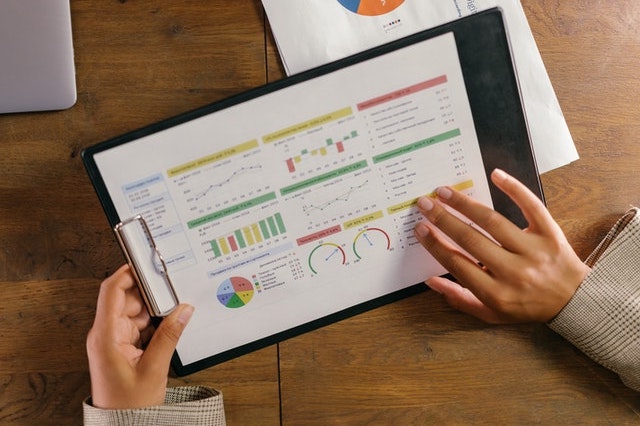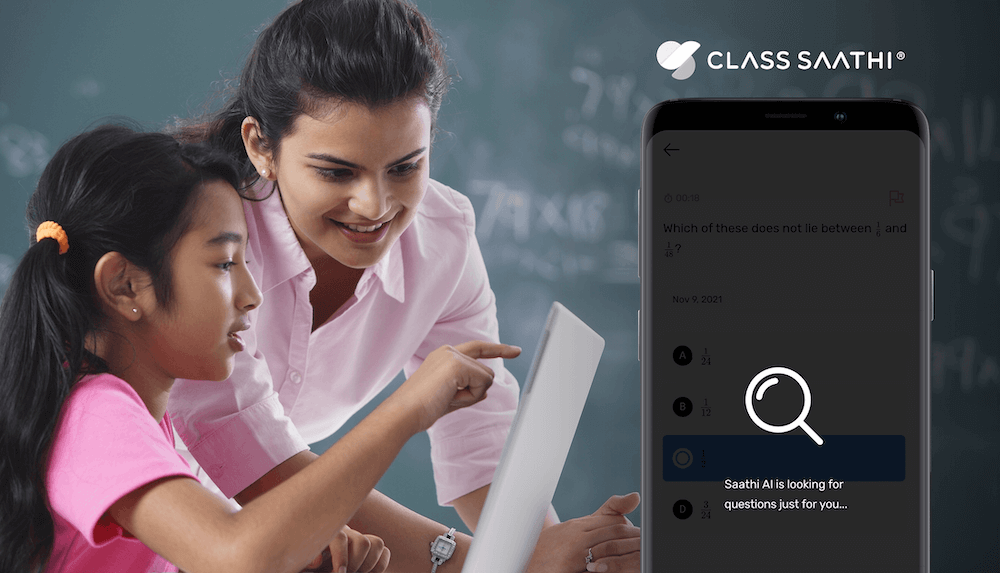The education sector has seen a lot of reformation in recent years. It is not unusual since it is one field where progressive values are incorporated and included without much doubt or hesitation. The education sector survived the pandemic and all the various turbulences it presented for this very reason.
Change is welcomed in the education sector, and technological integration plays a crucial role in embracing these changes. One instrument extensively researched and integrated into education today is "Learning Analytics."
Let us understand what Learning Analytics is and how Class Saathi incorporates it into its system.

Learning analytics is a mechanism that collects vital data to assess key areas of learning and reports on it to drive impactful reformations. The logical framework that governs learning analytics is nothing new. It has been around for decades. So now why is it gaining so much novel attention?
The answer is simple, learning analytics makes use of artificial intelligence that uses data smartly in order to not just report findings but also suggest measures that can accurately predict future outcomes based on these numbers.
This hastens the process of data collection, interpretation and analysis and also gives educators tangible outcomes to work on so that change can be driven in the most efficient and minutest ways.
This takes us to the next part of this article - what are the learning analytic tools that Class Saathi incorporates into its system?

Class Saathi prides itself on being an app that gives personalised learning recommendations for every student that uses this app. This may sound like a tall claim but it is one that is rightly justified by the system that our developers in South Korea have worked so hard to build. For the purpose of this report, we spoke to the people who creatively built this system and this is what they had to say:
Personalised learning is at the heart of Class Saathi’s operations and we built an app that benefits every student who uses it. For this purpose, our developers built a system with three main components:
A. Knowledge Level
A system records and analyzes every response based on factors like difficulty level and skills. The app first records the comfortable learning level of the student and gives them questions based on the recorded level and pushes them to gradually move up.
B. Updated Difficulty Level
The difficulty level for each skill or question is assigned based on the number of students who get it right in the first attempt. If there are more students who get one question or skill right, then the question is deemed easy and difficult if it is vice versa. This keeps changing with improved student learning outcomes.
C. Solve Interval Data
This is the most revolutionary data tool that we use. What this does is record questions that a student gets wrong consistently and recommend quizzes to help them learn the concepts attached to these questions.
The system does this for a while and then gives the student the same question to see if they have learnt the concept and moved up the levels of difficulty. This prepares students to reach higher order levels or learning without making it a difficult process.
As you can see, the logical framework that governs the app uses very complicated metrics and building that can only have been the product of genius minds. It is no easy task to standardise a product for students with globally varying learning levels.
Having said all of this, we must also remember that learning analytics can not be 100% accurate because it is constantly evolving. It can however predict the most probable outcomes for maximum benefit and maximum reformation.
According to our developers, matching reality to the learning level recorded by the system is challenging due to various variables that can interfere with accurate readings. However, the idea is to perfect a system by recognising the gaps, much as we do for our students.
The key is to continually strive for perfection, aiming to eliminate gaps from our system and obtain outcomes that do not hinder a deeper understanding of student behavior and learning.
Frequently Asked Questions about Learning Analytics
A1: It is the process of collecting, analysing, and interpreting data related to student learning and educational contexts. It relates to education by using data-driven insights to improve teaching and learning outcomes.
A2: It collects various types of data, including student performance data, engagement metrics, assessment scores, attendance records, and demographic information.
A3: It can identify students at risk of falling behind and provide early interventions. It helps educators tailor instruction, track progress, and provide personalized learning experiences to enhance student success.
A4: Yes, there are ethical considerations in Learning Analytics, such as data privacy and security. Institutions and educators must ensure that student data is handled responsibly and that individuals' privacy rights are protected.
A5: Common tools and technologies include Learning Management Systems (LMS), data analytics software, dashboards, and predictive modelling algorithms.
A6: Educators can benefit from it by gaining insights into student learning patterns, identifying areas for improvement, and adapting teaching strategies to meet individual student needs.
A7: Challenges may include data integration issues, the need for faculty training, concerns about data privacy, and ensuring that data analysis leads to actionable insights.
A8: Resources and support for Learning Analytics implementation can be found through educational technology providers, professional organizations, and conferences dedicated to educational data and analytics.
Learning Analytics offers a valuable tool for enhancing educational outcomes and supporting student success. By harnessing the power of data, educators and institutions can make informed decisions to improve teaching and learning in diverse educational settings.

